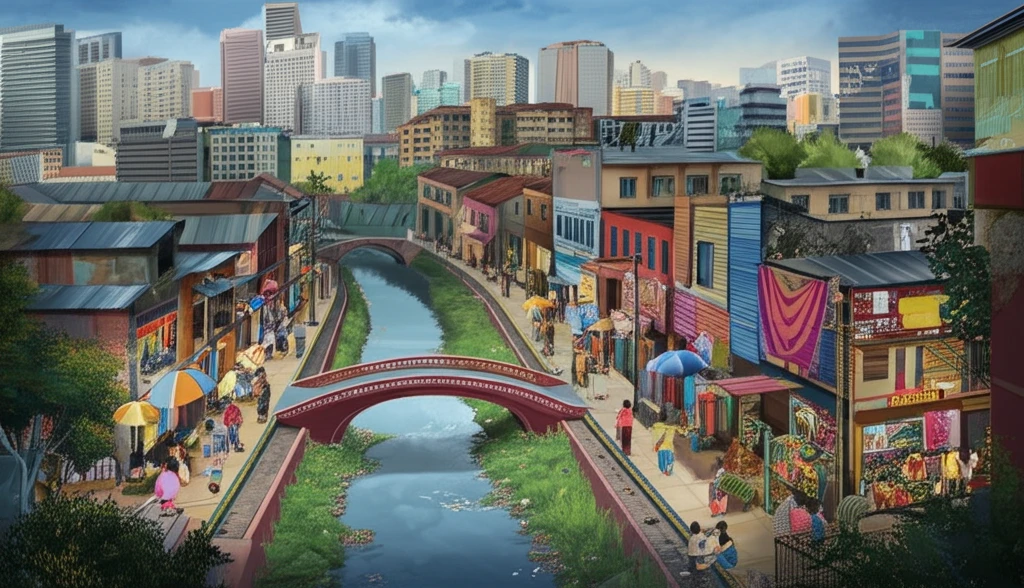
Beyond the River: How La Chimba Shaped Santiago's Identity
"Uncover the vibrant history of La Chimba, Santiago's frontier district, and its profound impact on the city's cultural and social fabric."
For centuries, cities have been defined not only by their centers of power and commerce but also by their peripheries – those liminal spaces where cultures collide, identities are forged, and the seeds of change are sown. In Santiago, Chile, that space is La Chimba.
Located north of the Mapocho River, La Chimba has historically served as a frontier, a place of transition and transformation. From its early days as an Indigenous settlement to its evolution as a refuge for immigrants and marginalized communities, La Chimba's story is one of resilience, adaptation, and the persistent negotiation of boundaries – both physical and social.
This article delves into the rich and often overlooked history of La Chimba, examining how its unique cultural landscape has shaped Santiago's identity. By exploring historical cartographies, analyzing socio-demographic trends, and amplifying the voices of its inhabitants, we uncover the enduring significance of this vibrant frontier district.
La Chimba: A Frontier Forged in History

La Chimba's identity as a frontier territory is deeply rooted in its historical geography. From the earliest colonial maps, it was depicted as a space apart – a wild, untamed area beyond the ordered grid of Santiago's city center. This perception was shaped by several factors:
- River as Boundary: The Mapocho River served as a natural barrier, both separating and connecting La Chimba to the city center. This physical separation reinforced its status as a distinct entity.
- Marginalized Communities: Over time, La Chimba became a haven for those excluded from the formal structures of colonial society, including Indigenous peoples, mestizos, and marginalized workers.
- Resistance to Control: Throughout its history, La Chimba has resisted attempts at centralized control and regulation, maintaining its own unique character and social order.
The Enduring Legacy of La Chimba
La Chimba's story is a reminder that cities are not monolithic entities but rather complex and contested spaces shaped by the interplay of diverse forces. By understanding the history of frontier territories like La Chimba, we gain a deeper appreciation for the richness and resilience of urban life and the enduring power of place in shaping identity and culture.
